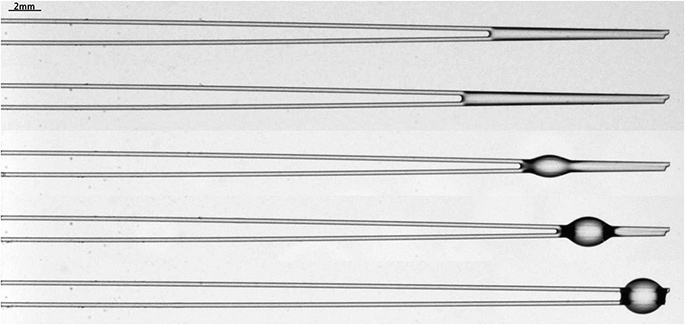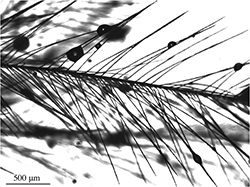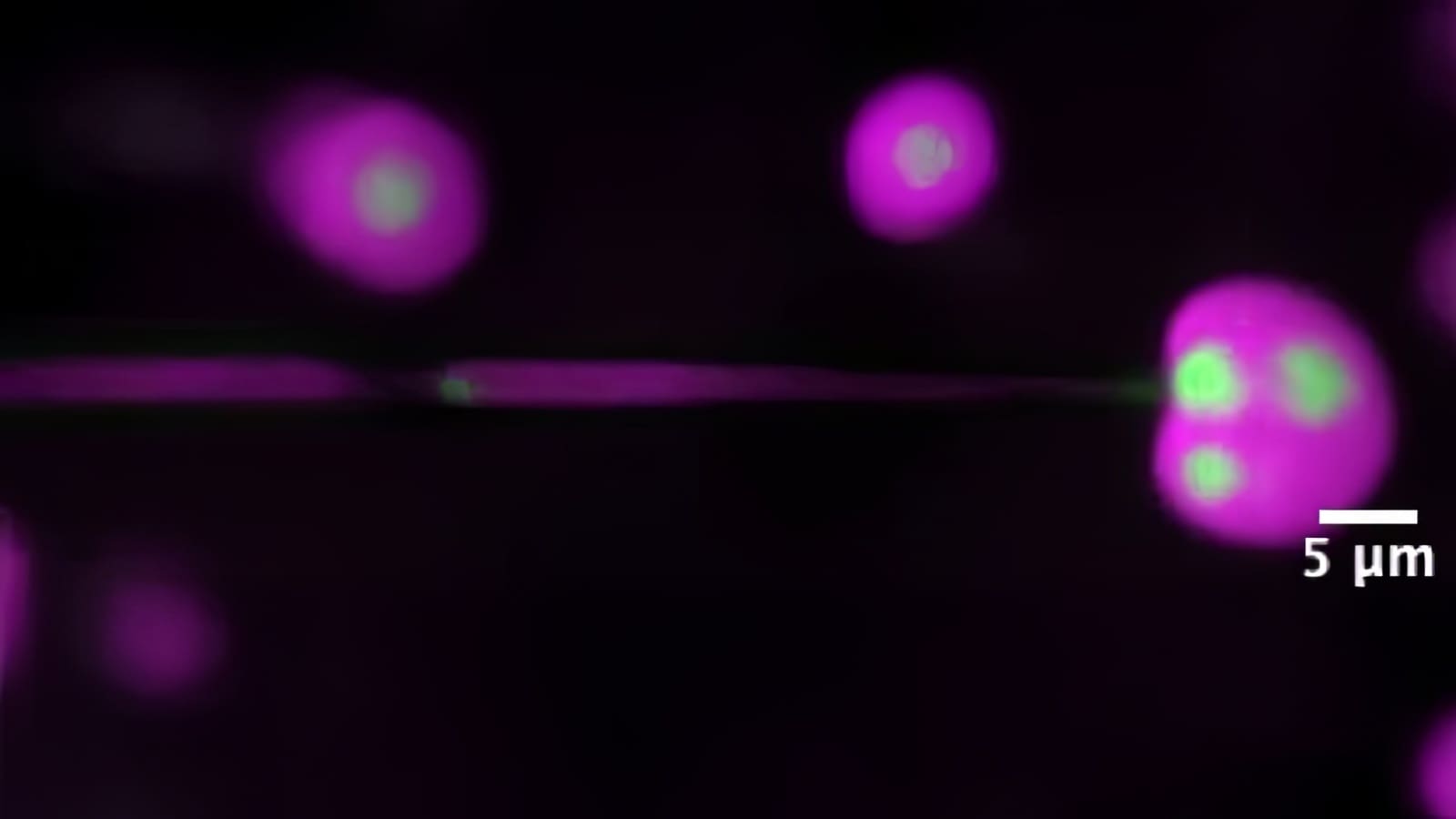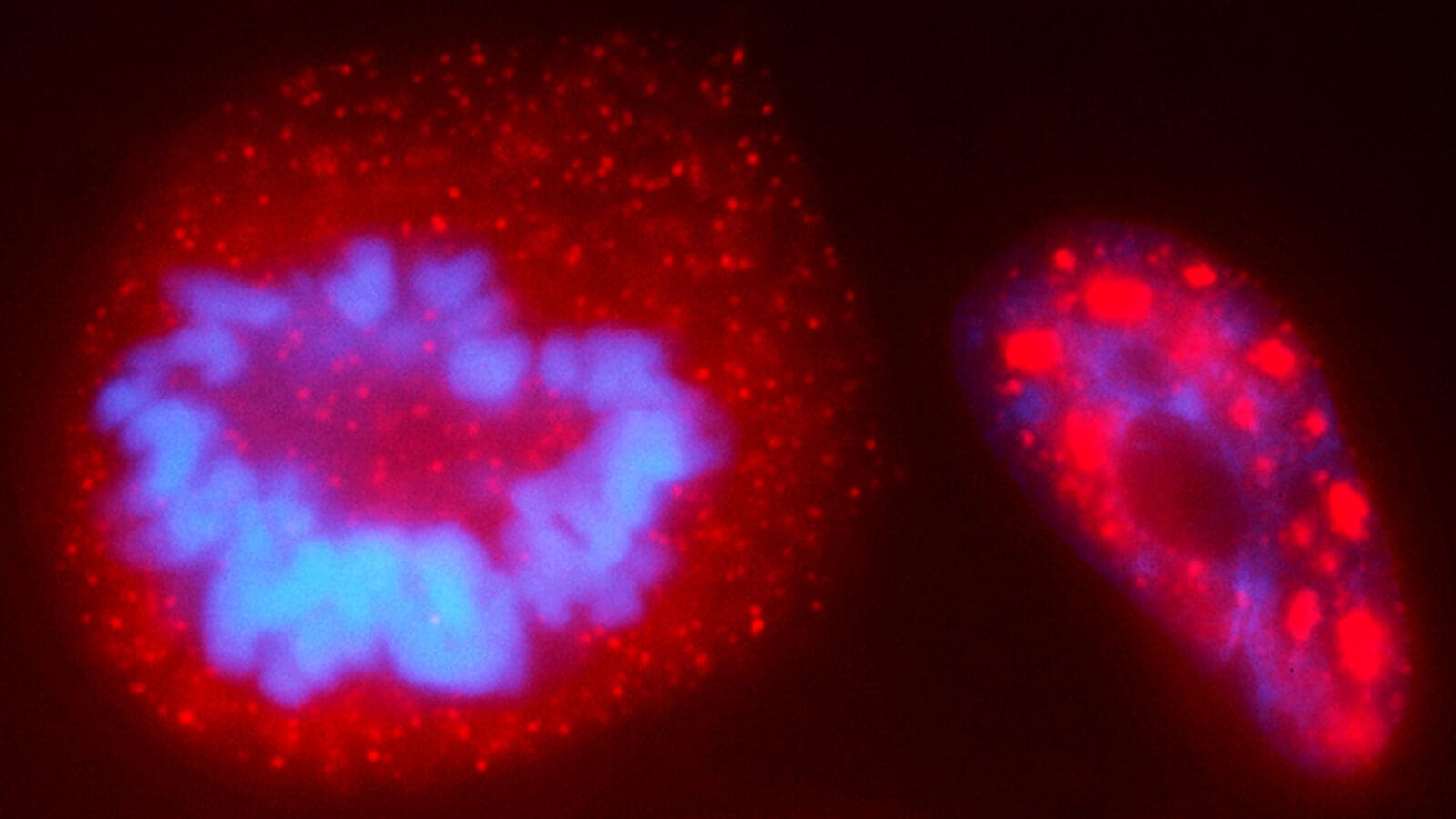Less is more: the study of tiny droplets could have big applications
By
on

Under a microscope, a tiny droplet slides between two fine hairs like a roller coaster on a set of rails until – poof – it suddenly spreads along them, a droplet no more.
That instant of change, like the popping of a soap bubble, comes so suddenly that it seems almost magical. But describing it, and mapping out how droplets stretch into tiny columns, is key to understanding how liquids affect fibrous materials, from air filters to human hair. That knowledge could allow scientists to better describe why water soaks into some materials, beads atop others and leaves others matted and clumped.
To help get those answers, an international team of researchers led by scientists at Princeton University made a series of close observations of how liquid spreads along flexible fibers. They were able to construct a set of rules that govern the spreading behavior, including some unexpected results. In a paper published in Nature, the researchers found that a key parameter was the size of the liquid drop.
“That surprised us,” said Camille Duprat, the paper’s lead author. “No one had thought about volume very much before.”
 Duprat, a postdoctoral researcher in the Department of Mechanical and Aerospace Engineering, said the research team was able to determine drop sizes that maximized wetting along certain fibers, which could allow for of liquids interacting with fibrous materials – from cleaning oil slicks to developing microscopic electronics. The team also discovered a critical drop size above which the drop would not spread along the fibers, but would remain perched like a stranded roller coaster car.
Duprat, a postdoctoral researcher in the Department of Mechanical and Aerospace Engineering, said the research team was able to determine drop sizes that maximized wetting along certain fibers, which could allow for of liquids interacting with fibrous materials – from cleaning oil slicks to developing microscopic electronics. The team also discovered a critical drop size above which the drop would not spread along the fibers, but would remain perched like a stranded roller coaster car.
“If in any engineering problem you can learn an optimal size above which something does not happen, you have learned something very important about the system,” said Howard Stone, a co-author of the paper and Princeton’s Donald R. Dixon ’69 and Elizabeth W. Dixon Professor in Mechanical and Aerospace Engineering.
Stone said the team conducted a series of experiments observing how liquid spread along different types of fibers. The plan was to make broad observations and derive a governing theory from the experiments.
“We had a lot of results and at some point we started having these meetings trying to understand what we had,” he said. “We realized the way to think about it was in the way of critical sizes.”
Besides Duprat and Stone, the researchers included Alexander Beebe, a Princeton junior majoring in mechanical and aerospace engineering, and Suzie ProtieÃÄre, an associate scientist at the University of Pierre and Marie Curie in Paris. The research at Princeton was conducted with support from Unilever.





